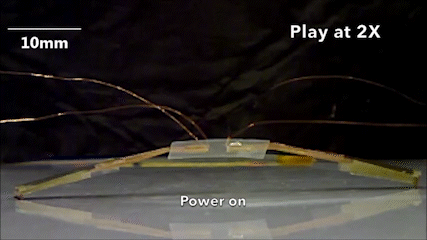Research makes big leap for insect-inspired robots
Insect-inspired robots that operate in hard-to-reach spaces and inhospitable environments have been developed at the University of Pittsburgh.


Junfeng Gao, who led the project as a PhD student in industrial engineering at the Swanson School of Engineering, said the insect-inspired robots could be used to access confined areas for imaging or environmental evaluation, take water samples, or perform structural evaluations.
“Anywhere you want to access confined places - where a bug could go but a person could not - these machines could be useful,” Gao said in a statement.
For many creatures under a certain size - trap-jaw ants, mantis shrimp, and fleas - jumping across a surface is more energy-efficient than crawling. Those impulsive movements were replicated in the robots, which are made of a polymeric artificial muscle.
“It’s akin to loading an arrow into a bow and shooting it - the robots latch on to build up energy and then release it in an impulsive burst to spring forward,” said M. Ravi Shankar, professor of industrial engineering at Pitt whose lab led the research. “Usually, actuation in the artificial muscles we work with is fairly slow. We were drawn to the question, ‘How do we take this artificial muscle and use it to generate a jumping actuation rather than slow actuation?’”
Register now to continue reading
Thanks for visiting The Engineer. You’ve now reached your monthly limit of news stories. Register for free to unlock unlimited access to all of our news coverage, as well as premium content including opinion, in-depth features and special reports.
Benefits of registering
-
In-depth insights and coverage of key emerging trends
-
Unrestricted access to special reports throughout the year
-
Daily technology news delivered straight to your inbox










Water Sector Talent Exodus Could Cripple The Sector
Maybe if things are essential for the running of a country and we want to pay a fair price we should be running these utilities on a not for profit...